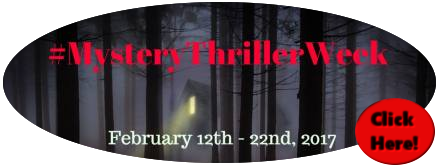Two of the most prolific country artists, Willie Nelson and Toby Keith, said it best – “Whiskey for my men and beer for my horses.” So it should come as no surprise to discover that the Babylonians and Mesopotamians were on to something when they began making whiskey in the 2nd millennium BC. As early as the 11th century, monks refined the methods still used today to produce this golden liquor. What is this much ado about fermented grain mash? Scots, Gaelics, and good old Irish boys have spent over 1,000 years honing their distillery skills, and quality whiskey is the result of their toils and trouble. So what education do you need to fit in with the serious whiskey samplers in your local neighborhood whiskey bar? Who among us has the knowledge to swirl and sniff out the best smoky peat? Here’s your beginner’s lesson.
The first written record by the monks of Scotland makes reference to distillery practices in 1494. The monks would celebrate with an extra hour of flagellation if they knew that 1.1 Billion bottles of distilled whiskey were exported in 2009. That’s one bottle for every 7 persons on our planet. To put it into better perspective, if laid end to end, that many bottles would create a whiskey highway to the International Space Station 650 times. Now that’s an autobahn!
 Next time you have a few bucks burning a hole in your pocket, consider your whiskey purchase options. In order to do that, you need to know a few things first. Quality whiskey is stored in wooden casks, typically White Oak charred by fire. The whiskey has been distilled 1-20 times, price increasing respective. Flavors are added to enhance the taste. Smoky flavors are achieved by fanning peat smoke through the malt as it ferments. Alcohol strength (ABV) varies, but statutory minimums are mandated at 40% ABV to be part of the whiskey class. In order to be deemed Tennessee whiskey like Jack Daniels, McKeel, Collier, or George Dickel, the whiskey must have been filtered through charcoal, a process unique to Tennessee distilleries. These whiskeys are technically considered Bourbons, but still loved by the family.
Next time you have a few bucks burning a hole in your pocket, consider your whiskey purchase options. In order to do that, you need to know a few things first. Quality whiskey is stored in wooden casks, typically White Oak charred by fire. The whiskey has been distilled 1-20 times, price increasing respective. Flavors are added to enhance the taste. Smoky flavors are achieved by fanning peat smoke through the malt as it ferments. Alcohol strength (ABV) varies, but statutory minimums are mandated at 40% ABV to be part of the whiskey class. In order to be deemed Tennessee whiskey like Jack Daniels, McKeel, Collier, or George Dickel, the whiskey must have been filtered through charcoal, a process unique to Tennessee distilleries. These whiskeys are technically considered Bourbons, but still loved by the family.
Of special note is the time whiskey ages. Whiskey peaks at a decade or two and is assigned an age determined by how long it spent in a cask. So if you have a bottle that is from the King Henry VIII era, it has not continued to appreciate in quality any more than a bottle distilled and stored in your basement since 1996. Drink up boys!
Listed here are the main grades of whiskey. There are subcategories that are too numerous to go into in one tiny article.
- Blended Whiskey – Different types of whiskeys from several distilleries
- Blended Malt – Single Malt from several distilleries
- Single Malt – 1 distillery, 1 mash, blend from several casks
- Cask Strength – Very rare, only the best from one distillery’s casks, undiluted
- Single Cask – Most rare, whiskey from 1 cask labelled with barrel and bottle number
Through times of questionable sanitary drinking conditions, whiskey served as the drink of choice. The oldest licensed distillery in existence today is Bushmills in Northern Ireland. So if you make it across the pond, belly up to the bar and order your favorite drink from a friendly leprechaun. A yummy pot of whiskey gold may be waiting for you somewhere over the rainbow.
Remember,
Read Yesterday’s Workout Wednesday Teacher Olympics
Tune in tomorrow for Freelance Friday The Danger of (Too Many) Words by R.F. Dunham
You are invited to submit a Guest Blog post. Find the guidelines here.






August 12, 2016 at 5:39 am
Thank you for the follow, pretty lady.😊
LikeLiked by 1 person
August 12, 2016 at 5:41 am
My pleasure. And thank you too!
LikeLiked by 1 person
August 12, 2016 at 5:41 am
My honor!
LikeLiked by 1 person
August 11, 2016 at 6:38 pm
Loved this
LikeLiked by 2 people
August 11, 2016 at 6:51 pm
Thanks so much! It was a fun little research project.
LikeLiked by 1 person